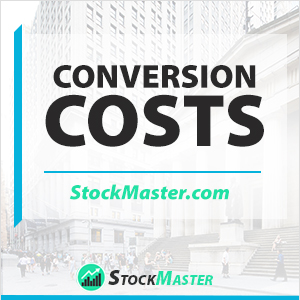 What is a Conversion Cost?
What is a Conversion Cost?
Definition: Conversion costs are any expenses or outlays of cash that was used to transform a raw material into a finished good.
In the world of business, the use of direct labor and factory overhead costs is very common. It is what is primarily referred to as conversion costs. It relates to the costs incurred during the process of turning raw materials into finished products. We are talking about indirect materials, overheads which not necessarily indirect materials or indirect labor, and also indirect materials and indirect labor.
Let us think about it this way; in any production process, materials are added in intervals and at discrete points of production. It may apply either at the beginning, in the middle, or at the end. However, the conversion is applicable throughout the process as what is added has to be turned into a more useable status.
Conversion Cost Formula
More often than not, conversion costs are usually higher within the manufacturing arena. They include:
- Factory rent, supplies, and insurance
- Equipment inspection, maintenance, and depreciation
- Machining
- Production utilities and supervision
- Related benefits to direct labor, including payroll taxes
Conversion Costs Example
Example 1: of a company whose direct labor and related costs amount to $100, 000. Overhead costs total to $107,000. In August, the company’s production was 30,000 units, whereby the cost of conversion was $6.90 per unit.
Example 2: Company G has the following expenses:
- Direct expenses = $65,000
- Insurance = $21, 000
- Maintenance = $8,500
- Electricity = $12,600
- Depreciation on machinery = $11,000
The conversion cost will be $65,000 + ($21, 000+$21, 000+$8,500+$12,600+$11,000) = $139,600.
The formula is Direct Effort Expenses + Manufacturing Overhead Costs = Conversion Costs
Conversion Costs vs. Prime costs
The two terms are different, yet many people tend to confuse or use them interchangeably, and besides, their use is mostly in the manufacturing industry. Their primary dissimilarity is that conversion costs relate more to costs of making raw materials become a product; prime costs concentrate on the disbursements of creating a complete product. In simple words, prime costs are all about direct labor and material costs, while conversion costs are all about overhead and direct labor expenses.
The main goal of prime costs is to help financial and operation managers set product prices, which will result in a significant profit. Tangible components of prime costs include raw materials for a finished product, while direct labor costs are employee’s wages and salaries or benefits.
Prime Costs Analysis
We shall use an example of a carpenter hired to make a bed. The prime cost of making this bed will include direct labor and raw materials. The total cost of the materials is $500, and the carpenter’s cost will be $60/hour. He will take four hours to finish the bed.
The prime cost of making the bed will, therefore, be $740 ($500 for the raw materials + $240 for direct labor). And for an acceptable amount of profit, the price of the table should be above the total cost of producing it; otherwise, anything below that means a loss.
Effective Management of Conversion Costs
By now, we all know that the most significant part of conversion costs are applicable in the manufacturing industry. They could be overwhelming, and you could be tempted to shut the doors of your business. Nonetheless, you need not do this. Why? Because there are several ways, you can lower the costs.
First, you can consider design modification. While it’s very natural to have a strong attachment to a particular design, how about if you alter it just a little without affecting its original purpose? It is likely to reduce costs without affecting the performance of the profit margins.
Second, you can renegotiate with manufactures but with a realistic target. Meaning you must support your negotiations with facts from competitive research.
Thirdly, consider doing away with packaging services, mainly if you are operating an online business. The truth is the packaging is a way of advertising and adding value, but you can research other ways of doing so without unnecessary costs.
